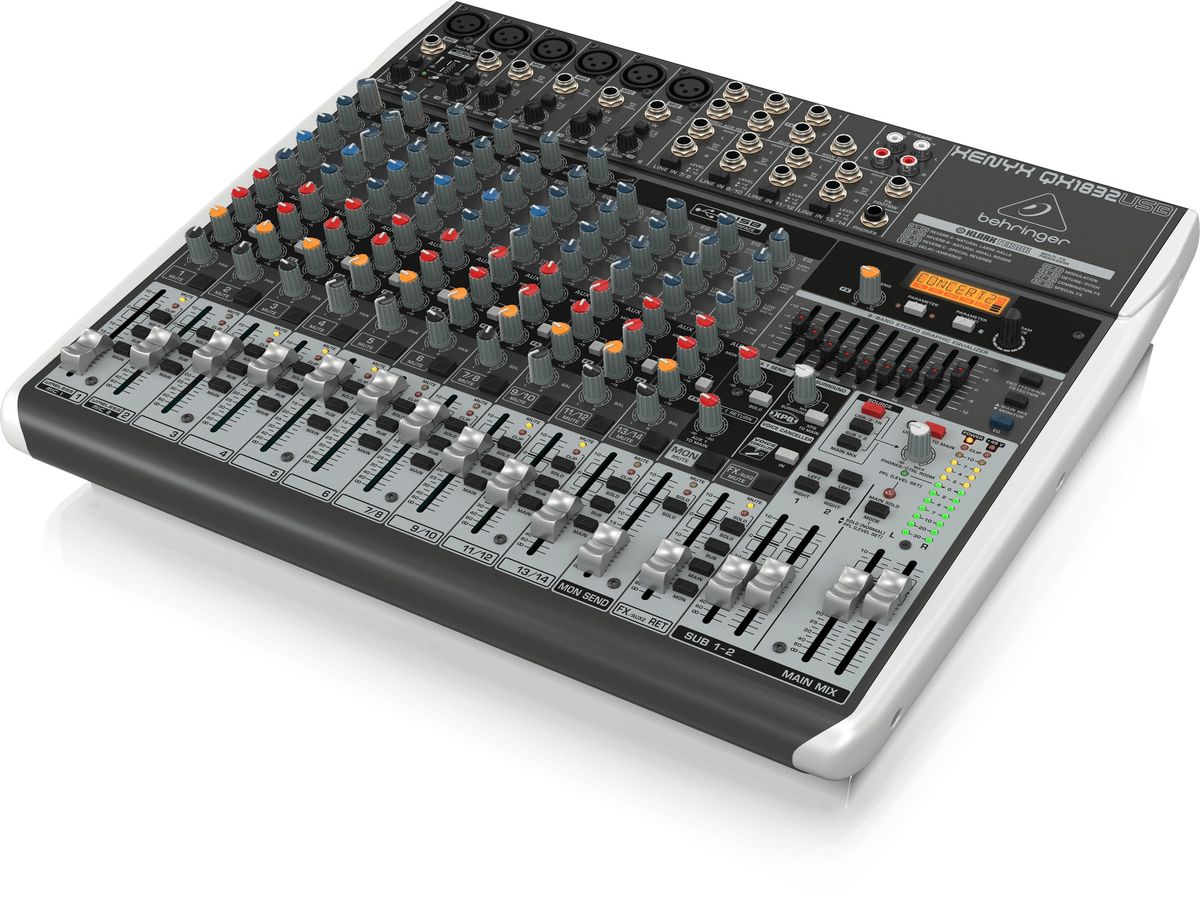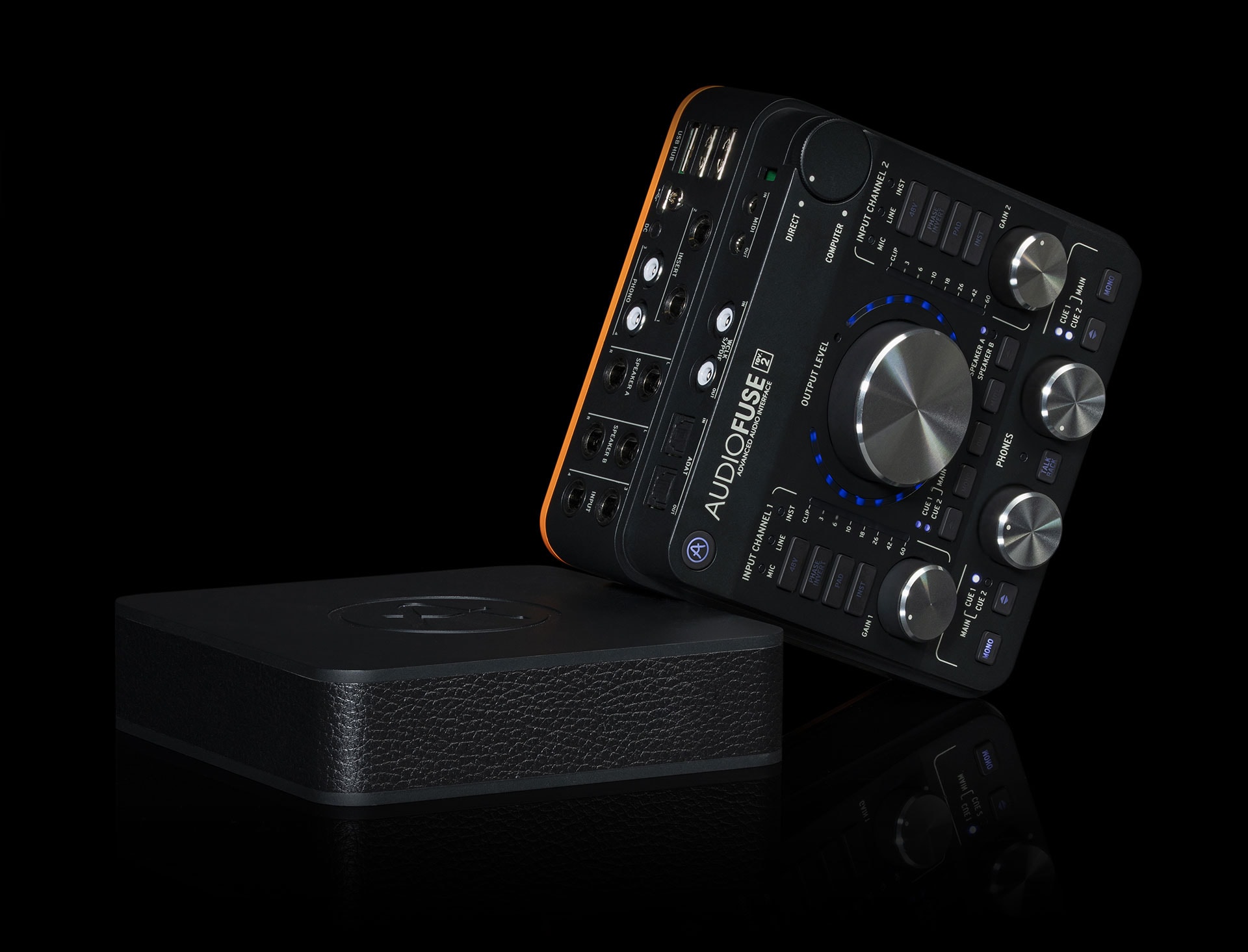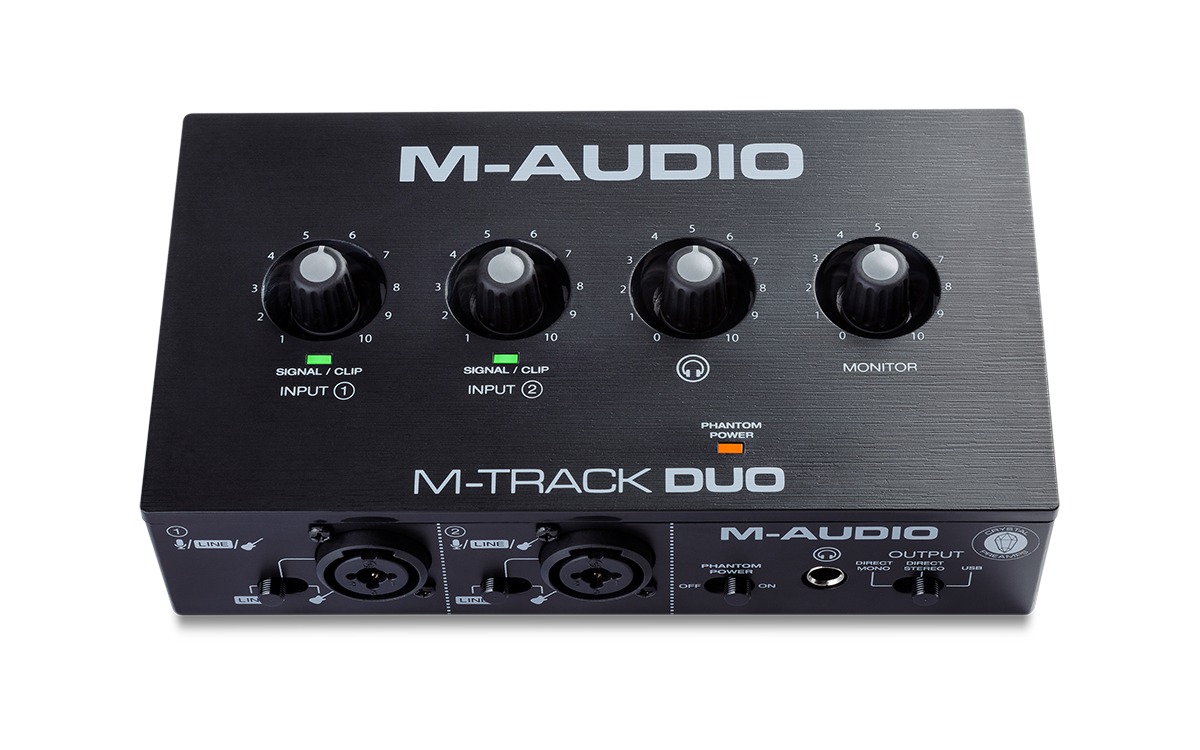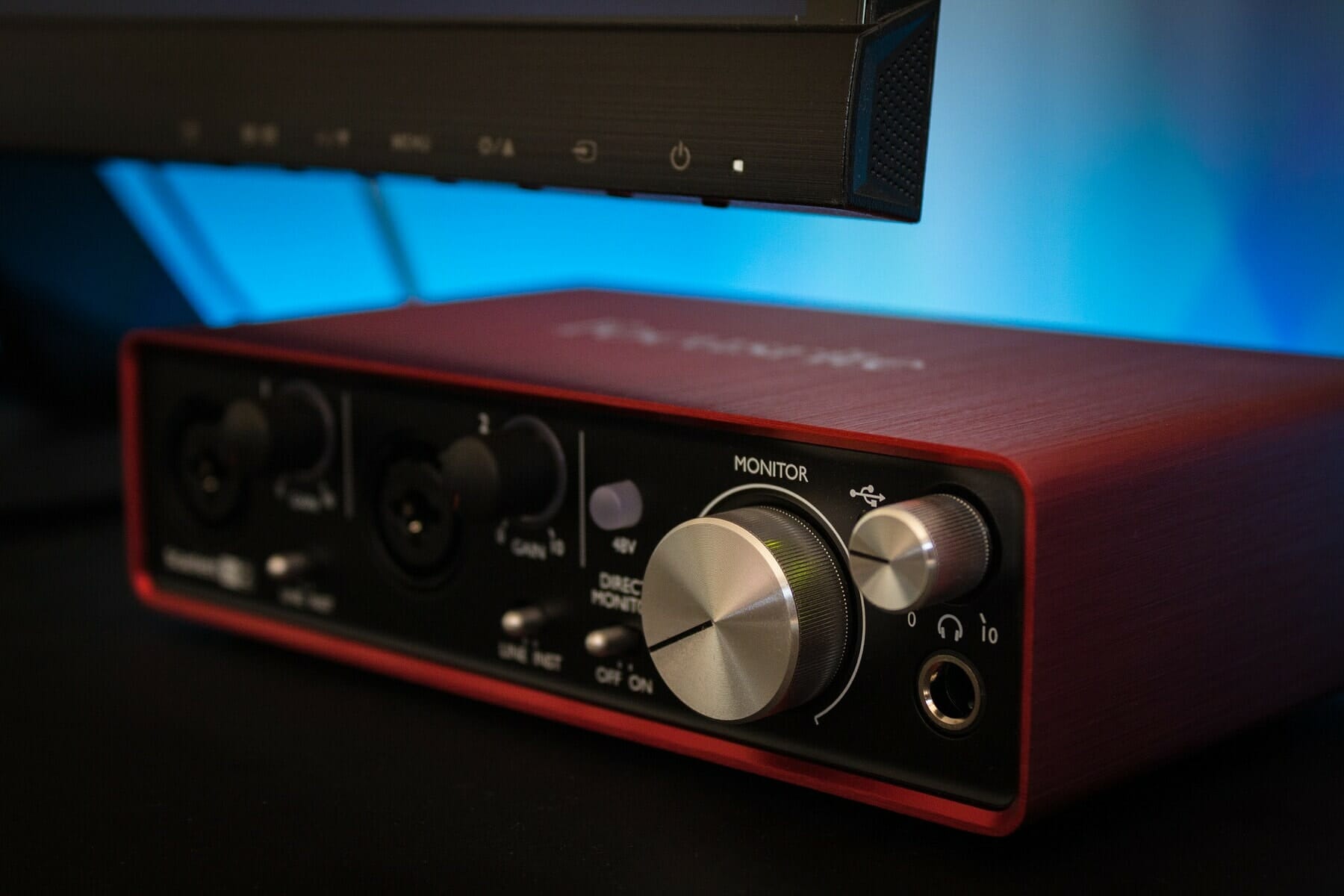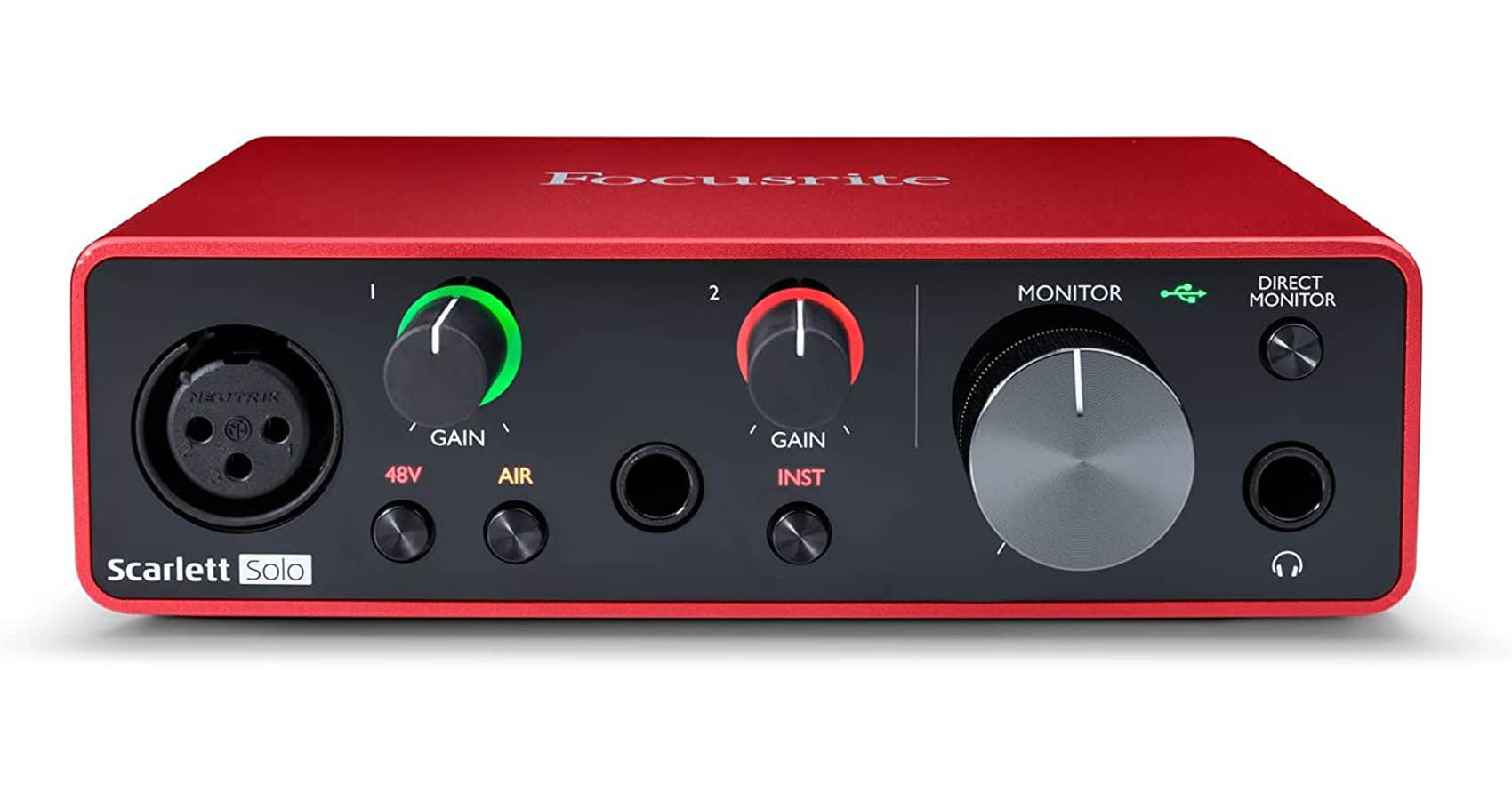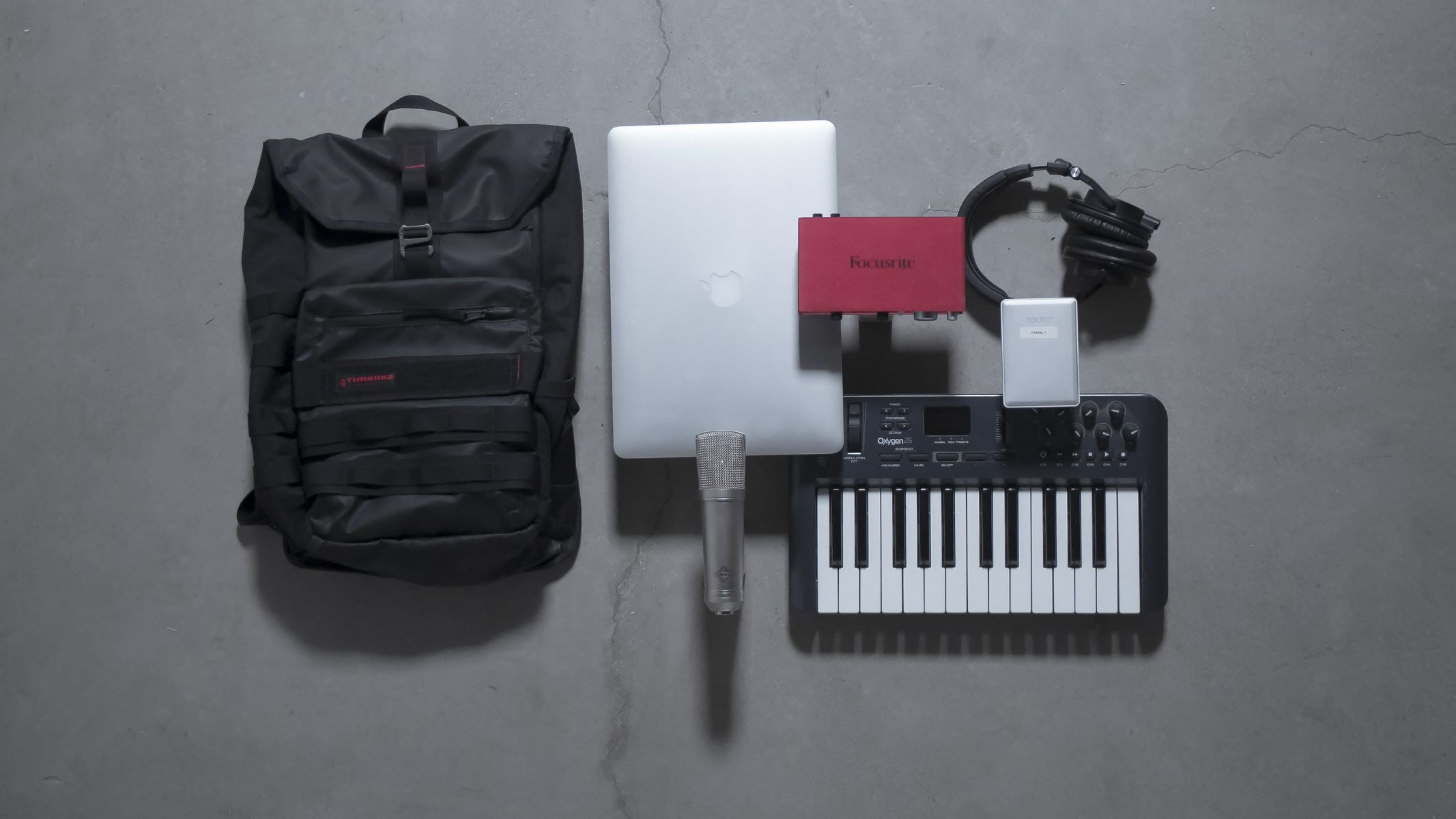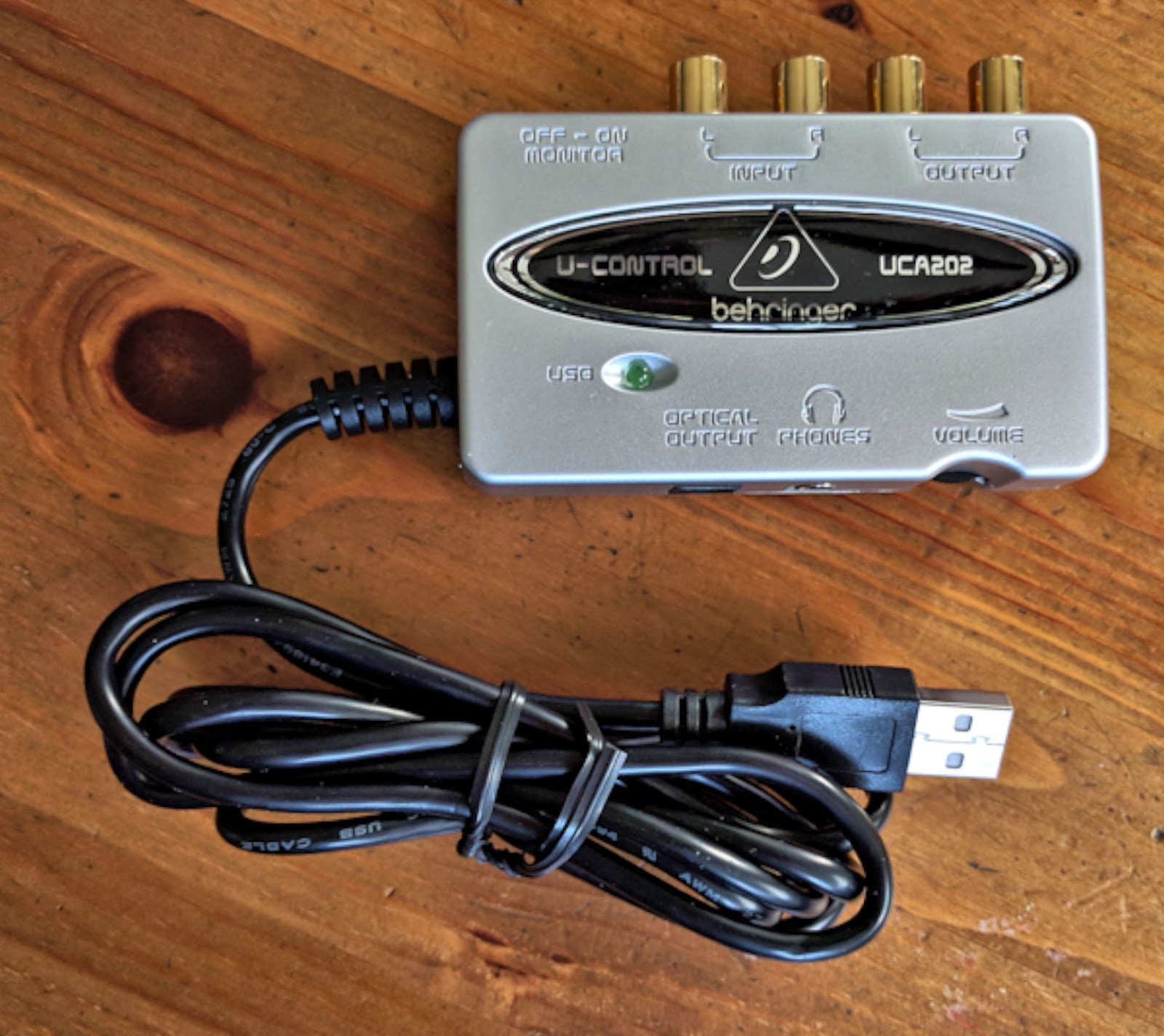Home>Production & Technology>Audio Interface>What Is USB Audio Interface
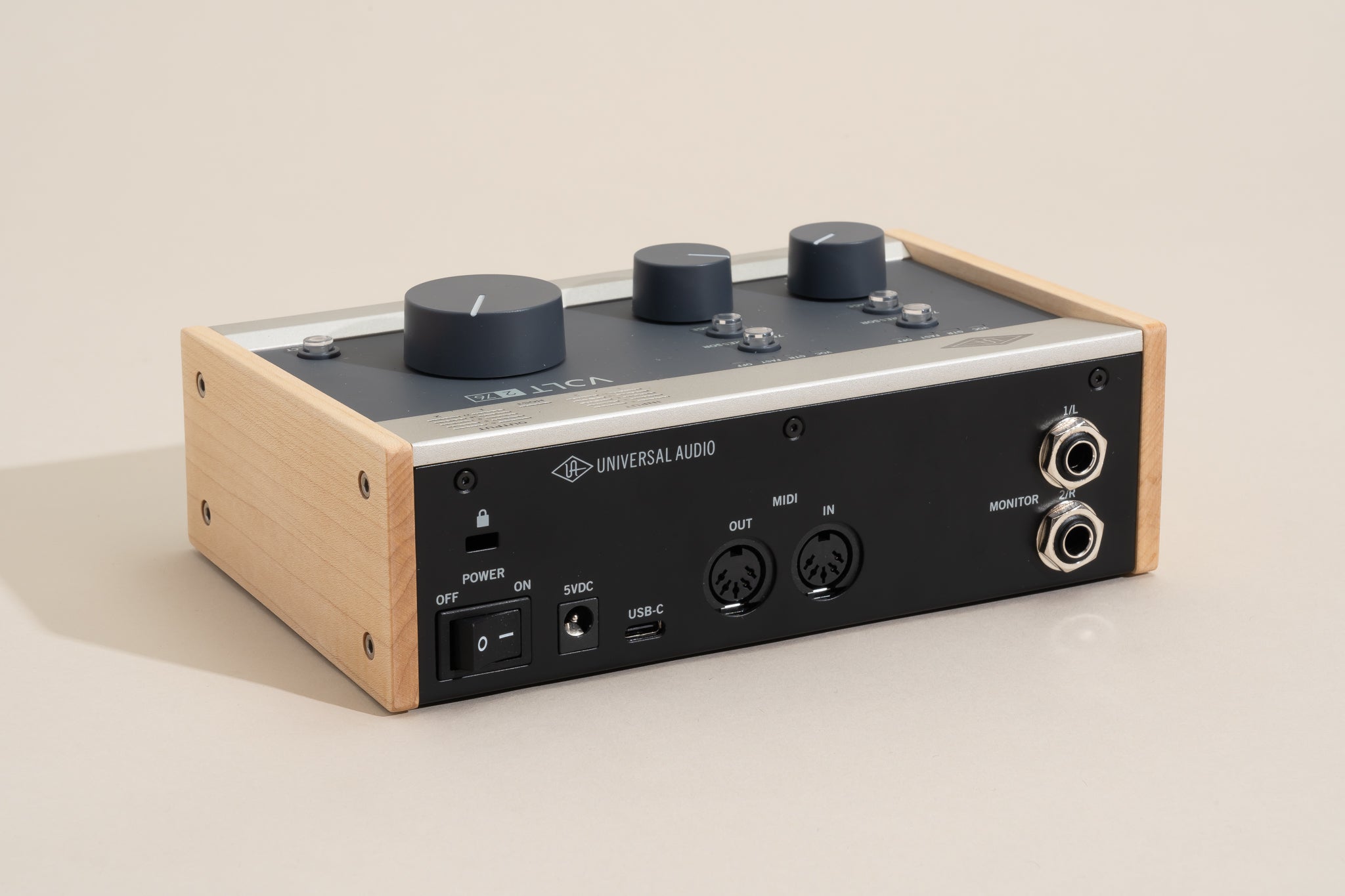

Audio Interface
What Is USB Audio Interface
Modified: February 19, 2024
Discover the benefits of USB audio interfaces. Improve your audio quality and enhance your recording and production experience with an advanced audio interface.
(Many of the links in this article redirect to a specific reviewed product. Your purchase of these products through affiliate links helps to generate commission for AudioLover.com, at no extra cost. Learn more)
Table of Contents
- Introduction
- Definition of USB Audio Interface
- How Does a USB Audio Interface Work?
- Benefits of Using a USB Audio Interface
- Common Features of USB Audio Interfaces
- Factors to Consider When Choosing a USB Audio Interface
- Installation and Setup of USB Audio Interface
- Troubleshooting USB Audio Interface Issues
- Conclusion
Introduction
Welcome to the world of audio interfaces! In this digital age, where music production and recording have become more accessible than ever, having a good audio interface is essential for anyone involved in audio production or music creation. Whether you are a professional musician, a podcast enthusiast, or someone just getting started in the world of audio recording, a USB audio interface can greatly enhance your capabilities and improve the overall quality of your recordings.
So, what exactly is a USB audio interface? Simply put, it is a device that allows you to connect external audio sources, such as microphones and instruments, to your computer via a USB connection. It serves as the bridge between analog audio signals and the digital realm, facilitating the conversion and transfer of audio data from external sources to your computer and vice versa.
Nowadays, most USB audio interfaces come with a variety of inputs and outputs, allowing you to connect multiple sources simultaneously. They also offer features such as preamps, headphone outputs, direct monitoring, and built-in effects, expanding your recording capabilities and ensuring high-quality sound reproduction.
With the rise of home studios and the increasing demand for high-quality audio content, USB audio interfaces have become an essential tool for musicians, podcasters, content creators, and even gamers. They provide a cost-effective solution for capturing professional-grade audio and offer flexibility, portability, and ease of use.
In this article, we will explore the world of USB audio interfaces in detail. We will delve into how they work, the benefits they offer, common features to look for, and factors to consider when choosing the right interface for your needs. Additionally, we will provide guidance on installation, setup, and troubleshooting common issues that may arise when using a USB audio interface.
So, whether you are a seasoned audio professional or just starting your journey in the realm of audio production, this article will serve as a comprehensive guide to understanding and harnessing the power of USB audio interfaces. Let’s dive in and explore the world of high-quality audio recording!
Definition of USB Audio Interface
A USB audio interface is a device that allows you to connect external audio sources, such as microphones, instruments, or line-level devices, to your computer via a USB connection. It acts as the intermediary between analog audio signals and the digital realm of your computer, facilitating the conversion and transfer of audio data. Essentially, it bridges the gap between your external audio devices and your digital audio workstation (DAW).
USB audio interfaces come in various forms and sizes, ranging from compact and portable units designed for solo artists and mobile recordings, to larger desktop interfaces with advanced features suitable for professional studios. Regardless of their size, these interfaces typically offer a range of inputs and outputs, allowing you to connect microphones, guitars, keyboards, and other audio sources to your computer for recording and playback.
One of the primary functions of a USB audio interface is to convert analog audio signals into digital data that your computer can recognize and process. It achieves this through an analog-to-digital converter (ADC) and vice versa through a digital-to-analog converter (DAC). These converters ensure accurate and high-fidelity audio reproduction, preserving the nuances and subtleties of your recordings.
USB audio interfaces offer a multitude of benefits, including improved audio quality, low latency recording and monitoring, and expanded connectivity options. They often feature built-in microphone preamps, which amplify the weak signals from microphones, ensuring a clean and robust audio signal to your computer.
Additionally, USB audio interfaces provide phantom power, which is crucial for condenser microphones that require external power to operate. They also offer headphone outputs for direct monitoring, allowing you to hear your recordings in real-time without any latency.
Furthermore, USB audio interfaces commonly come with various inputs and outputs, including XLR and TRS connectors, MIDI inputs and outputs, and sometimes even digital connectors like S/PDIF or ADAT. This versatility allows you to connect a wide range of audio sources and expand your creative possibilities.
All in all, a USB audio interface is an essential tool for any musician, producer, podcaster, or content creator looking to capture high-quality audio and take their recordings to the next level. With its ability to bridge the gap between analog and digital audio, the USB audio interface opens up a world of possibilities for creativity and professional-grade sound reproduction.
How Does a USB Audio Interface Work?
A USB audio interface works by converting analog audio signals into digital data that your computer can understand, and vice versa. It facilitates the seamless transfer of audio data between external devices, such as microphones and instruments, and your computer, allowing you to record and playback high-quality audio.
When you connect a microphone or instrument to the inputs of a USB audio interface, the signal is first picked up by the device’s preamp. The preamp amplifies the weak analog signal, making it stronger and suitable for processing. This is especially useful for microphones, which typically produce very low-level signals.
Once the analog signal is amplified, it goes through an analog-to-digital converter (ADC) inside the USB audio interface. The ADC converts the analog signal into digital data, which consists of a series of binary numbers that represent the audio waveform. The higher the bit depth of the ADC, the more accurately it can capture the nuances and details of the audio signal.
After the analog signal has been converted into digital data, it is sent to your computer via the USB connection. The USB audio interface uses the USB protocol to communicate with your computer, transmitting the digital audio data in real-time. The USB connection provides both power and data transfer, eliminating the need for an external power source for the interface.
On the computer side, the digital audio data is received by the USB driver, which is a software component that allows your operating system to communicate with the audio interface. The driver processes and routes the audio data to your digital audio workstation (DAW) or any other audio software you are using for recording and playback.
When it comes to playback, the process is reversed. The audio data from your computer is sent back to the USB audio interface via the USB connection. It goes through a digital-to-analog converter (DAC) inside the interface, which converts the digital data back into an analog audio signal.
The analog signal then passes through the output stage of the USB audio interface, which typically includes a headphone amplifier and line outputs. The headphone amplifier allows you to monitor your recordings in real-time with zero latency, while the line outputs can be connected to speakers or other audio devices for playback.
In essence, a USB audio interface acts as the intermediary between your external audio sources and your computer, ensuring accurate conversion and transfer of audio data. It enables you to capture high-quality recordings and achieve professional-grade sound reproduction, making it an indispensable tool for any audio production setup.
Benefits of Using a USB Audio Interface
Using a USB audio interface offers a multitude of benefits for musicians, podcasters, content creators, and anyone involved in audio production. Let’s explore some of the key advantages:
- Improved Audio Quality: One of the primary benefits of using a USB audio interface is the significant improvement in audio quality. These interfaces are equipped with high-quality analog-to-digital converters (ADCs) and digital-to-analog converters (DACs), ensuring accurate and faithful reproduction of your audio recordings. The result is professional-grade sound reproduction with enhanced clarity, detail, and dynamic range.
- Low Latency Recording and Monitoring: USB audio interfaces offer low latency recording and monitoring capabilities, allowing you to hear your audio in real-time without any noticeable delay. This is crucial for tasks such as vocal recording or playing virtual instruments, where even a slight delay can negatively impact performance. The direct monitoring feature on these interfaces enables you to monitor your input signal without going through your computer, bypassing any latency introduced by the software.
- Expandability and Versatility: USB audio interfaces come with a range of inputs and outputs, providing you with flexible connectivity options. You can connect multiple microphones, instruments, and line-level devices simultaneously, allowing you to record a full band or capture a variety of audio sources simultaneously. Additionally, these interfaces often have MIDI inputs and outputs, enabling you to connect MIDI controllers, keyboards, and other MIDI devices.
- Phantom Power and Preamps: Many USB audio interfaces feature built-in microphone preamps and phantom power. The preamps amplify the weak signals from microphones, ensuring optimal recording levels and a clean audio signal. Phantom power is crucial for condenser microphones, providing the necessary power for their operation. Having these features built into the interface eliminates the need for external preamps or power supplies.
- Portability and Convenience: USB audio interfaces are often compact and portable, making them ideal for mobile recordings or on-the-go setups. They can easily fit into a backpack or laptop bag, allowing you to take your recording studio with you wherever you go. The USB connection also provides both power and data transfer, reducing cable clutter and simplifying the setup process.
Overall, using a USB audio interface enhances your recording and production capabilities, providing you with professional-grade sound quality, low latency performance, and versatile connectivity. Whether you are capturing vocals, recording instruments, or producing podcasts, a USB audio interface is a valuable tool to elevate your audio production to the next level.
Common Features of USB Audio Interfaces
USB audio interfaces come with a variety of features that enhance their functionality and versatility. While the specific features may vary depending on the model and brand, there are some common features that you can expect to find in most USB audio interfaces. Let’s explore them:
- Multiple Inputs and Outputs: USB audio interfaces typically offer multiple inputs and outputs, allowing you to connect a range of audio sources. Common input types include XLR,TRS, and instrument-level inputs, while output options include headphone outputs and line-level outputs for connecting speakers or other audio devices. Multiple inputs and outputs enable you to record multiple sources simultaneously and provide flexible monitoring and playback options.
- Microphone Preamps: Many USB audio interfaces feature built-in microphone preamps. These preamps amplify the weak signals from microphones, ensuring optimal recording levels and a clean audio signal. Having preamps built into the interface eliminates the need for external preamps and simplifies the setup process.
- Phantom Power: Phantom power is a feature found in most USB audio interfaces. It provides the necessary power for condenser microphones that require external power to operate. With phantom power, you can easily connect and use condenser microphones without the need for additional power supplies.
- Headphone Outputs and Direct Monitoring: USB audio interfaces often come equipped with headphone outputs for direct monitoring. Direct monitoring allows you to listen to your audio in real-time without any latency, providing a seamless recording experience. It enables you to hear your input signal directly from the interface, bypassing the computer’s processing and eliminating any delay introduced by software.
- MIDI Connectivity: Many USB audio interfaces have MIDI inputs and outputs, allowing you to connect MIDI controllers, keyboards, and other MIDI devices. This enables you to integrate MIDI instruments and devices into your setup, opening up a world of possibilities for music production, virtual instruments, and MIDI-controlled effects.
- High-Quality Audio Conversion: USB audio interfaces utilize high-quality analog-to-digital converters (ADCs) and digital-to-analog converters (DACs) to ensure accurate and faithful audio conversion. These converters play a crucial role in capturing and reproducing your audio with exceptional clarity and detail.
- Software Compatibility: USB audio interfaces typically work seamlessly with various digital audio workstations (DAWs) and audio software. They are often compatible with both Windows and macOS operating systems, making them versatile and accessible to a wide range of users.
These are just a few of the common features you can find in USB audio interfaces. It’s important to identify your specific needs and requirements before choosing an interface, as different models may offer different combinations of features. Consider the type of audio sources you will be working with, the number of inputs/outputs you require, and any additional features that may enhance your workflow. Selecting an interface with the right features will ensure that it meets your recording, playback, and monitoring needs.
Factors to Consider When Choosing a USB Audio Interface
When choosing a USB audio interface, there are several important factors to consider to ensure that you select the one that best suits your needs. Here are some key factors to keep in mind:
- Input and Output Configuration: Consider the number and type of input and output connections you require. Determine whether you need XLR, TRS, or instrument-level inputs, and how many simultaneous inputs you need for your recording setup. Think about whether you need headphone outputs, line-level outputs, or other specialized connections.
- Preamp Quality: If you plan to use microphones, pay attention to the quality of the built-in microphone preamps. Look for interfaces that offer clean and transparent preamps with sufficient gain for your microphone types.
- Audio Conversion Quality: The quality of the analog-to-digital converters (ADCs) and digital-to-analog converters (DACs) is crucial for capturing and reproducing high-quality audio. Look for interfaces with reputable converter technology for accurate and transparent audio conversion.
- Bit Depth and Sample Rate: Consider the supported bit depth and sample rate of the interface. Higher bit depths and sample rates provide greater precision and fidelity in audio reproduction. Determine whether the interface supports the sample rates and bit depths you require for your specific recording needs.
- Compatibility: Check the compatibility of the USB audio interface with your operating system (Windows or macOS) and your preferred digital audio workstation (DAW) or audio software. Ensure that the interface is supported and well-suited for your setup.
- Latency Performance: Low latency is essential for real-time monitoring and recording. Look for interfaces with low latency performance to minimize delay when recording and monitoring audio.
- Build Quality and Portability: Consider the build quality of the interface. Look for a sturdy and durable construction that can withstand the rigors of travel or studio use. If portability is important to you, choose a compact and lightweight interface that is easy to transport.
- Budget: Determine your budget for an audio interface. USB audio interfaces come in a wide range of price points, so it’s important to find one that offers the features and performance you need within your budget.
By considering these factors and evaluating your specific needs, you can choose a USB audio interface that will meet your recording, playback, and monitoring requirements effectively. Take the time to research and compare different models, read user reviews, and consider any additional features that may enhance your workflow. It’s also a good idea to try out different interfaces if possible to ensure compatibility and user-friendliness. Ultimately, selecting the right USB audio interface will greatly enhance your audio production capabilities and contribute to high-quality recordings.
Installation and Setup of USB Audio Interface
Setting up a USB audio interface is generally a straightforward process. Here are the steps to guide you through the installation and setup:
- Read the Manual: Begin by reading the user manual of your USB audio interface. Familiarize yourself with the specific instructions provided by the manufacturer for installation and setup.
- Connect the Interface: Start by connecting your USB audio interface to your computer using a USB cable. Most interfaces are plug-and-play, meaning they will be automatically recognized by your operating system without the need for additional drivers. However, some interfaces may require you to install specific drivers provided by the manufacturer.
- Install Drivers: If your interface requires drivers, visit the manufacturer’s website and download the latest drivers for your specific model and operating system. Follow the installation instructions provided by the manufacturer to install the drivers on your computer.
- Configure Audio Settings: Once the interface is connected and any necessary drivers are installed, you will need to configure your audio settings. This usually involves selecting the USB audio interface as the default audio input and output device in your computer’s sound settings. Check the documentation of your operating system to find detailed instructions on how to do this.
- Set Sample Rate and Buffer Size: Adjust the sample rate and buffer size settings in the control panel or software provided by the interface manufacturer. These settings determine the audio quality and latency for your recordings. Higher sample rates offer better audio fidelity but may require more computer processing power. The buffer size affects the latency during recording and playback – a smaller buffer size reduces latency but increases the workload on your computer’s CPU.
- Connect Audio Sources: Connect your microphones, instruments, or other audio sources to the appropriate inputs on the USB audio interface. Make sure to use the correct cables and connectors for your specific devices.
- Monitor and Test: Use the headphone output or line outputs of the audio interface to monitor your audio. Open your recording software or digital audio workstation (DAW) and configure the input and output settings to match your USB audio interface. Test the audio signal by recording or playing back audio and adjust the volume levels as needed.
- Additional Software Setup: Depending on your specific recording needs, you might need to install additional software for recording, editing, or mixing. Ensure that these software programs are properly configured to use the USB audio interface as your audio input and output device.
Keep in mind that the specific steps may vary depending on your USB audio interface and operating system. Always refer to the user manual and documentation provided by the manufacturer for accurate installation and setup instructions. If you encounter any issues, consult the troubleshooting section of the manual or contact the manufacturer’s support for assistance.
Once your USB audio interface is installed and set up correctly, you can begin recording and producing high-quality audio with confidence.
Troubleshooting USB Audio Interface Issues
While USB audio interfaces are generally reliable and easy to set up, occasional issues may arise. Here are some common troubleshooting steps to help you address any problems you may encounter:
- Check Connections: Ensure that all cables and connections between your USB audio interface, computer, and audio sources are secure and properly connected. Sometimes, a loose or faulty connection can cause audio issues.
- Update Drivers: If you are experiencing issues with your USB audio interface, check if there are any updated drivers available from the manufacturer’s website. Updating your drivers can often resolve compatibility issues or improve overall performance.
- Restart Your Computer: Sometimes, simply restarting your computer can help resolve minor software or driver conflicts that may be causing audio issues with your USB audio interface.
- Adjust Sample Rate and Buffer Size: If you are experiencing audio latency or distortion, try adjusting the sample rate and buffer size settings within your audio software or the control panel provided by your USB audio interface. Experiment with different settings to find the optimal balance between audio quality and latency.
- Check Power and USB Ports: Ensure that your USB audio interface is receiving enough power. If it is powered by USB, try connecting it to a different USB port or using a powered USB hub if available. Inadequate power can result in audio artifacts or intermittent signal loss.
- Disable Other Audio Devices: If you have multiple audio devices connected to your computer, such as internal speakers or other sound cards, disable them temporarily to avoid conflicts with your USB audio interface.
- Test with Different Cables and Audio Sources: If you suspect a cable or audio source issue, try using different cables or connecting alternate audio sources to your USB audio interface. This can help identify if the problem lies in a specific cable or device.
- Check Software Settings: Double-check the audio settings and preferences within your recording software or digital audio workstation (DAW). Ensure that the correct audio input and output devices are selected and the volume levels are properly adjusted.
- Reset the Interface: If none of the above steps solve the problem, consult the user manual or the manufacturer’s support for instructions on how to perform a system reset on your USB audio interface. This can resolve any internal configuration issues.
- Seek Technical Support: If you have tried all troubleshooting steps and are still facing issues with your USB audio interface, reach out to the manufacturer’s technical support. They can provide additional guidance or determine if there may be a hardware issue that requires repair or replacement.
Remember, troubleshooting steps may vary depending on your specific USB audio interface and operating system. Always refer to the user manual and documentation provided by the manufacturer for accurate troubleshooting instructions. Patience and persistence are key when troubleshooting, and with a systematic approach, most issues can be resolved, allowing you to get back to creating and enjoying high-quality audio!
Conclusion
A USB audio interface is a powerful tool that opens up a world of possibilities for audio production, whether you’re a musician, podcaster, content creator, or simply passionate about creating high-quality audio. It serves as the bridge between your external audio sources and your computer, facilitating the conversion and transfer of audio data with exceptional clarity and fidelity.
In this article, we explored the definition and functionality of USB audio interfaces. We discussed how they work, the benefits they offer, common features to look for, factors to consider when choosing an interface, and the installation and setup process. We also provided troubleshooting steps to address any potential issues that may arise when using a USB audio interface.
By investing in a USB audio interface, you can elevate the quality of your recordings, achieve low latency performance, and expand your creative possibilities. These interfaces offer improved audio quality, expanded connectivity options, and features such as microphone preamps, phantom power, and direct monitoring.
When selecting a USB audio interface, it’s important to consider factors such as input/output configuration, preamp quality, audio conversion, compatibility, and budget. By carefully evaluating your specific needs and requirements, you can choose an interface that will meet your recording, playback, and monitoring needs effectively.
Remember, proper installation, setup, and troubleshooting are essential for a smooth experience with your USB audio interface. Take the time to read the user manual, install necessary drivers, configure audio settings, and ensure all connections are secure. In case of any issues, follow the troubleshooting steps or seek support from the manufacturer.
In conclusion, a USB audio interface is an indispensable tool for anyone involved in audio production. From capturing professional-grade recordings to enhancing your listening experience, it empowers you to create and enjoy high-quality sound. So, embrace the power of USB audio interfaces and let your creativity soar!

